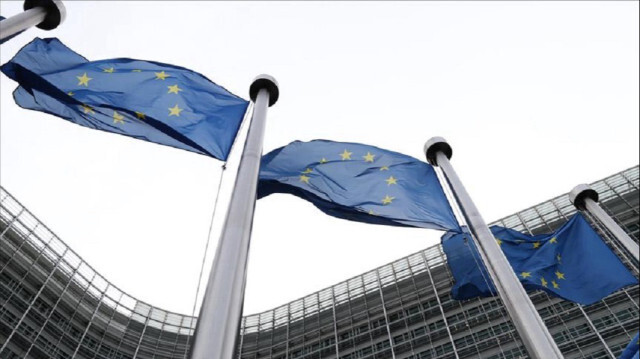
EU attained 90% occupancy rate goal around 2.5 months in advance with completion of last stage of filling process
Members of the European Union (EU) have filled their natural gas storage facilities to a level of roughly 90%.
Stefan de Keersmaecker, a spokesperson for the EU Commission, confirmed in a news conference in Brussels that EU natural gas storage facilities have reached 89.89% capacity, in line with the EU’s goal of having natural gas storages filled to at least 90% capacity by Nov. 1.
Keersmaecker sees this level as a move in the right direction to ensure enough supplies for the winter months.
EU nations, which utilize around 400 billion cubic meters of gas annually, have 110 billion cubic meters of natural gas storage capacity.
Before the Russian-Ukrainian War, 40% of the natural gas consumed in EU nations came from Russia. However, with the outbreak of the war, Russian natural gas exports to the EU have significantly declined.
The Union nations had developed legal frameworks mandating the filling of underground natural gas storage facilities prior to the winter months due to the conflict between Russia and Ukraine.
As a result, it was anticipated that 90% of the gas tanks would be filled by Nov. 1 this year. The EU, on the other hand, achieved its target around 2.5 months early with the conclusion of the final stage of this process.
"The EU's gas storage has reached 90%, well ahead of schedule. This will help us be safe this winter. Together, we are weaning ourselves off Russian gas, and we keep working in parallel on more diverse energy supplies for the future," President of the European Commission Ursula von der Leyen was quoted as saying on the X social media platform, formerly known as Twitter.
- Prices subject to much volatility
Despite high occupancy rates in the EU's gas warehouses, gas prices across the continent have continued to fluctuate widely in recent days.
One reason for such volatility is concern that a planned strike by employees at liquefied natural gas (LNG) plants in Australia could disrupt 10% of the world's LNG supplies.
On the Dutch TTF, the virtual natural gas trading market with the most depth in the Netherlands, the gas price per megawatt-hour in September futures contracts is now trading at €36.9.
Following last week's strike announcement, gas prices increased by 30%.
Although Australia only provides a small quantity of LNG directly to Europe, the region's increased reliance on LNG imports came as a result of the dramatic decline in Russian gas exports to the continent after the Russian-Ukrainian War.
As a result, LNG supply difficulties on the global market directly influence gas prices in Europe, with existing uncertainties resulting in significant price volatility.

